PRINCE2® PROCESSES - Managing a Stage Boundary
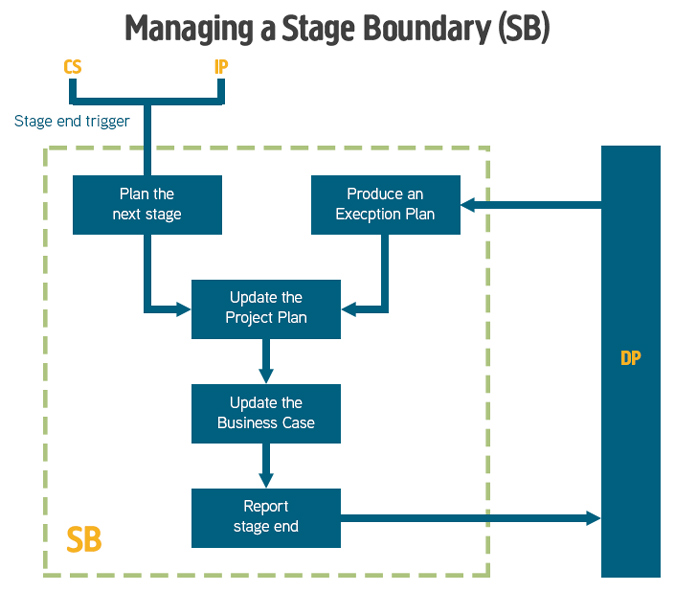
The purpose of the Managing a Stage Boundary process is to enable the Project Board to be provided with sufficient information by the Project Manager so that it can review the success of the current stage, approve the next Stage Plan, review the updated Project Plan, and confirm continued business justification and acceptability of the risks. Therefore, the process should be executed at, or close to the end of, each management stage. The PRINCE2 Processes are covered in detail on our PRINCE2 Foundation training and PRINCE2 Practitioner training courses.
The objective of the Managing a Stage Boundary process is to:
- Assure the Project Board that all products in the Stage Plan for the current stage have been completed and approved
- Prepare the Stage Plan for the next stage
- Review and, if necessary, update the Project Initiation Documentation (in particular the Business Case, Project Plan, project approach, strategies, project management team structure, and role descriptions)
- Provide the information needed for the Project Board to assess the continuing viability of the project – including the aggregated risk exposure
- Record any information or lessons that can help later stages of this project and/or other projects
- Request authorization to start the next stage.
The main products of this process are as follows:
- An End Stage Report produced by the Project Manager and given to the Project Board, outlining information on the current stage achievements.
- Current Stage Plan actuals showing the performance against the original Stage Plan.
- The Next Stage or Exception Plan for approval.
- Project Initiation Documentation may require updating.
- A revised Project Plan incorporating all the actual metrics.
- An updated Risk register, together with the Updated Business Case and Project Plan, which is used by the Project Board to review that the Project has continuing ongoing viability.
- Configuration item records created/updated for new stage products.
- An updated Business Case.
- The Lessons Log.
- Any changes to the Project Management Team with updated Job Descriptions.
Team plans may also be produced when planning the next stage, defining the work packages that will be produced in the next stage.
Andy Trainer
12 Jul 2007
PRINCE2® PROCESSES – Initiating a Project (IP)
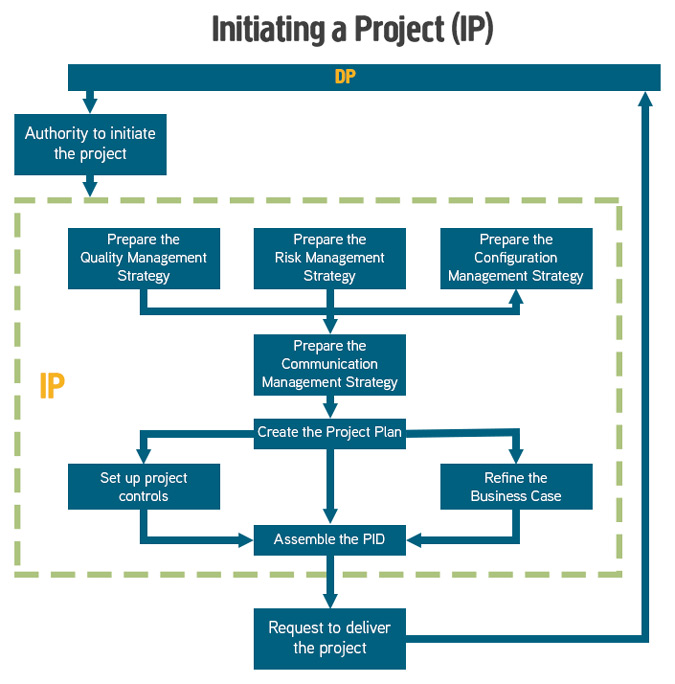
See our training for PRINCE2.
The purpose of the Initiating a Project process is to establish solid foundations for the project, enabling the organisation to understand the work that needs to be done to deliver the project’s products before committing to a significant spend.
The objective of the Initiating a Project process is to ensure that there is a common understanding of:
- The reasons for doing the project, the benefits expected and the associated risks
- The scope of what is to be done and the products to be delivered
- How and when the project’s products will be delivered and at what cost
- Who is to be involved in the project decision making
- How the quality required will be achieved
- How baselines will be established and controlled
- How risks, issues and changes will be identified, assessed and controlled
- How progress will be monitored and controlled
- Who needs information, in what format, and at what time
Other products created and ready for use when the project commences are:
- Risk Management Strategy and Risk Register
- Configuration Management Strategy, Initial Configuration Item Records and Issue Register
- Quality Management Strategy and Quality Register
- Communication Management Strategy
- Project Controls
- Role Descriptions
- Project Management Team Structure
- Project Plan
- Product Descriptions
- Benefits Review Plan
- Detailed Business Case
- Project Initiation Documentation
Andy Trainer
12 Jul 2007
PRINCE2® PROCESSES – Directing a Project (DP)

The purpose of the Directing a Project process is to enable the Project Board to be accountable for the project’s success by making key decisions and exercising overall control while delegating day-to-day management of the project to the Project Manager.
The objective of the Directing a Project process is to ensure that:
- There is authority to initiate the project
- There is authority to deliver the project’s products
- Management direction and control are provided throughout the project’s life, and that the project remains viable
- Corporate or programme management has an interface to the project
- There is authority to close the project
- Plans for realising the post-project benefits are managed and reviewed.
The Directing a Project process starts on completion of the Starting up a Project process and is triggered by the request to initiate a project.
The PRINCE2 processes are covered in detail in our PRINCE2 Foundation course and PRINCE2 Practitioner training courses.
Andy Trainer
12 Jul 2007
PRINCE2® PROCESSES – Directing a Project (DP)

The purpose of the Directing a Project process is to enable the Project Board to be accountable for the project’s success by making key decisions and exercising overall control while delegating day-to-day management of the project to the Project Manager.
The objective of the Directing a Project process is to ensure that:
- There is authority to initiate the project
- There is authority to deliver the project’s products
- Management direction and control are provided throughout the project’s life, and that the project remains viable
- Corporate or programme management has an interface to the project
- There is authority to close the project
- Plans for realising the post-project benefits are managed and reviewed.
The Directing a Project process starts on completion of the Starting up a Project process and is triggered by the request to initiate a project.
The PRINCE2 processes are covered in detail in our PRINCE2 Foundation course and PRINCE2 Practitioner training courses.
Andy Trainer
12 Jul 2007
Could Lean Six Sigma be used to create the perfect sportsman/woman?
This is a topic of much debate across forums, blogs, books and in lecture halls around the world.
Lean Six Sigma has had unprecedented success in reducing waste and improving quality, not only in the manufacturing industry in which it originated, but in other branches of business from Advertising to HR, which is why we don't only focus on its manufacturing roots on our Lean Six Sigma Green Belt Training.

In fact we've written recently about how it can be used outside of business - for cooking, solving crimes faster and even controlling diabetes - but could it go so far as to work for sport?
Six Sigma Tennis
After recovering from a traumatic brain injury, former Tennis professional Steven Falk wrote "Six Sigma Tennis" in which he outlined his methodology for using Six Sigma to improve the coaching and training of players to the point where they reach their maximum potential ability (or at least 99.7% of it!).
Using the DMAIC method he argues that a coach or player themselves can pinpoint weaknesses and improve on them.
So let's take tennis as the example as Falk does: imagine a player who is of the highest quality but still loses about 40% of points when returning a serve. Using DMAIC you can pinpoint exactly where the deficiency is.
Let's imagine that they win 80% of points when using the forehand shot; this must mean they only win 40% of points when using a backhand. This is clearly the weakness and so can be identified as the shot that needs most work and training.
Andy Trainer
12 Jul 2013
Could Lean Six Sigma be used to create the perfect sportsman/woman?
This is a topic of much debate across forums, blogs, books and in lecture halls around the world.
Lean Six Sigma has had unprecedented success in reducing waste and improving quality, not only in the manufacturing industry in which it originated, but in other branches of business from Advertising to HR, which is why we don't only focus on its manufacturing roots on our Lean Six Sigma Green Belt Training.

In fact we've written recently about how it can be used outside of business - for cooking, solving crimes faster and even controlling diabetes - but could it go so far as to work for sport?
Six Sigma Tennis
After recovering from a traumatic brain injury, former Tennis professional Steven Falk wrote "Six Sigma Tennis" in which he outlined his methodology for using Six Sigma to improve the coaching and training of players to the point where they reach their maximum potential ability (or at least 99.7% of it!).
Using the DMAIC method he argues that a coach or player themselves can pinpoint weaknesses and improve on them.
So let's take tennis as the example as Falk does: imagine a player who is of the highest quality but still loses about 40% of points when returning a serve. Using DMAIC you can pinpoint exactly where the deficiency is.
Let's imagine that they win 80% of points when using the forehand shot; this must mean they only win 40% of points when using a backhand. This is clearly the weakness and so can be identified as the shot that needs most work and training.
Andy Trainer
12 Jul 2013
We decided that PRINCE2® diagrams could do with a freshen up so we've created an easy to read, standardised set of diagrams covering the 7 PRINCE2 processes to help learn PRINCE2.
Starting with the PRINCE2 Process Model and then breaking it down into each of the 7 processes.
If you've ever searched Google for 'PRINCE2 diagrams' you will know that it's not a pretty sight, and a lot of those diagrams are either too plain or impossible to decipher.
Our set of diagrams makes the PRINCE2 processes easier to understand by complimenting your PRINCE2 pre-course work and manual when preparing for your PRINCE2 Practitioner Exam.
PRINCE2 Process Model
PRINCE2 describes the steps of project management in seven processes. Any PRINCE2 project will need to address each of the processes but the extent of the application of a process should be decided on a project by project basis.
The PRINCE2 Process Model below describes the relationship between the seven processes:
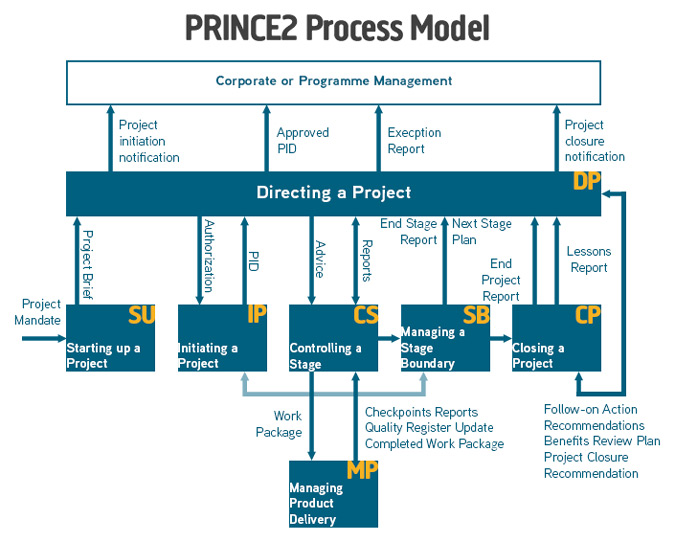
Andy Trainer
4 Jul 2013
Everyone hates queueing. It annoys customers and business-owners alike; so much so in fact that queue management is considered a significant part of business theory as it can have a huge impact on the service that a customer receives.
If it's done well, it becomes a barely noticeable aspect of the experience. Done wrong, and it can lead to excessive waiting times that will distress and irritate the customer.
Using the DMAIC method from Six Sigma, it's possible to reduce waiting times in queues for everywhere from supermarkets to airports. This will lead to a better service overall and that means happy customers.
Six Sigma is used in a wide variety of businesses and settings to increase efficiency and quality. From factories to governments, its primary use is to make processes better. On our Six Sigma Green Belt Training Course you'll learn all the basics of how to apply Six Sigma to your business needs.
Define
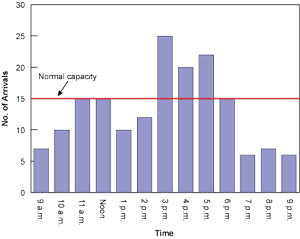
So firstly, it's important to define what the exact issue is with the queueing system. Is it that the waiting time is consistently so long that customers are actually leaving before reaching the front? Is it that there are certain 'peak' times when staff can't handle the volume of customers?
Knowing exactly what the problem is allows for more targeted, and therefore successful, addressing of the issue.
According to queue management theory, there are three aspects of queueing which could be causing an issue:
- Arrival Process
- Service Mechanism
- Queue Characteristics
Arrival Process
How is it that customers are coming to be in the queue? Do they arrive in droves? One-by-one? Is there a primary queue and a secondary queue (like at a club for example; one queue to get in, another to pay)?
Is there some kind of bottleneck in the arrival process that means too many customers enter the queue at once? Answering these questions allows you to pinpoint the problem if it's in the arrival process.
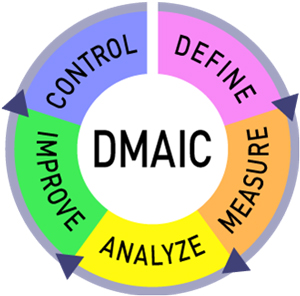
Andy Trainer
7 Jun 2013